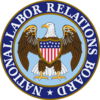Section 10(j) Injunctions - Litigation Success Rate Report
Section 10(j) of the National Labor Relations Act authorizes the National Labor Relations Board to seek temporary injunctions against employers and unions in federal district courts to grant temporary relief or a restraining order while the case is pending the Board decision. These temporary injunctions are needed to protect the process of collective bargaining and the exercise of employee rights under the Act, and, given the time the Board’s own deliberative process takes, to ensure that Board decisions after full consideration of the merits of any case will still be meaningful.
If the Board authorizes the General Counsel to seek injunctive relief, courts around the country use slightly different tests in deciding Section 10(j) petitions. In some circuits (3d, 5th, 6th, 10th, 11th) courts use a test that asks whether there is reasonable cause to believe that unfair labor practices have occurred and whether injunctive relief is just and proper (“two-part test”). See, e.g., Sharp v. Webco Indus., Inc., 225 F.3d 1130, 1133-1134 (10th Cir. 2000); Arlook v. S. Lichtenberg & Co., 952 F.2d 367, 369 (11th Cir. 1992). Courts in other circuits (4th, 7th, 8th, 9th) use a four-part test, asking whether the Board has a likelihood of success on the merits, whether it faces irreparable harm, whether the balance of hardships tips in the agency’s favor, and whether an injunction is in the public interest. See, e.g., Muffley v. Spartan Mining Co., 570 F.3d 534, 543 (4th Cir. 2009); Bloedorn v. Francisco Foods, Inc., 276 F.3d 270, 286 (7th Cir. 2001); Hooks v. Nexstar Broad., Inc., 54 F.4th 1101, 1106 (9th Cir. 2022). And in some circuits (1st, 2d), courts blend both formulations (“hybrid test”), determining whether injunctive relief is “just and proper” by considering the elements of the four-part test. See, e.g., Pye v. Sullivan Bros. Printers, Inc., 38 F.3d 58, 63 (1st Cir. 1994); Kreisberg v. HealthBridge Mgmt., LLC, 732 F.3d 131, 141 (2d Cir. 2013), cert. denied, 574 U.S. 1066 (2014). The information below lists overall success rates (injunctions granted in whole or in part) and success rates by courts grouped according to the standard they use.

